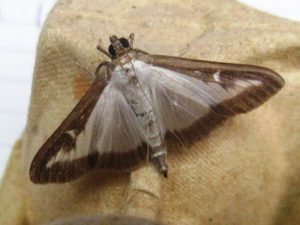(September 2020) Nature Notes
Once again it is pleasing to have several contributions from others in the villages. It makes my life easier and adds some welcome variety.
Colin Lamb now has a trail camera and has recorded foxes almost every night with up to four at times as well as Muntjac deer with a fawn. Badgers have also been recorded.
Nigel Fletcher has also seen and heard foxes (probably the same ones) in the early hours of the morning returning from their nightly hunting forays.
Dian Baker found and photographed a Privet Hawk-moth in her garden in Cotswold Close. This is the largest resident British moth and is a really impressive insect. The caterpillars feed on Privet (not surprisingly!) but also Ash.
In the hot weather there has been a lot of evidence of badgers having dug out bumble bee nests often leaving very large holes. While walking through Swalcliffe Common we spotted a rather tatty Silver-washed Fritillary. This is woodland butterfly that is increasing distribution and abundance and occasionally turns up in gardens.
A Gold Swift moth was found at the Hook Norton Railway Cutting reserve. It was a female that was rather dull brown in colour, it is the males that are gold. Unusually it is the males that produce a pheromone to attract the females and it is said to smell quite strongly of pineapple.

Probably less good news on the moth front was the appearance of a Box Tree moth in my moth trap. This is a species that was introduced to Europe from the far East and has rapidly spread and become a serious pest of Box hedges.
Andy and Gill Newbold